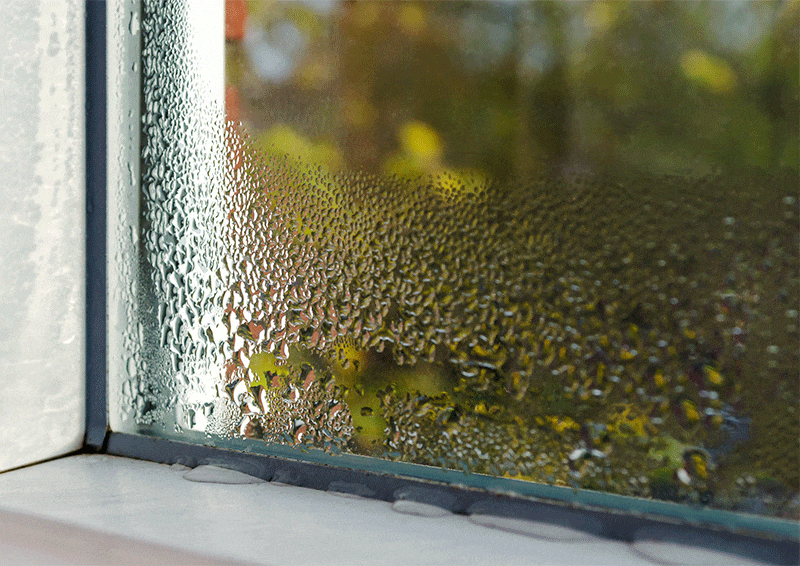Are you concerned about the air you breathe? Whether you’re at home, in the office, or out in the world, the quality of the air around you can have a significant impact on your health and well-being. That’s where air quality testing comes in. In this blog, we’ll dive deep into the world of air quality testing, exploring its importance, benefits, and how it can help you create a safer and healthier environment. From detecting harmful pollutants to identifying potential sources of sick building syndrome, we’ll cover it all to empower you with the knowledge you need to make informed decisions about your air quality. So, let’s clear the air and get started on this fascinating journey of air quality testing.
The phrase “air quality testing” might sound complex, but in reality, it’s a critical process that can provide you with valuable insights into the condition of the air you breathe. With the rise of environmental concerns and the increasing prevalence of sick building syndrome, understanding the air quality around us has never been more important. Through air quality testing, professionals can assess the levels of various contaminants, such as volatile organic compounds (VOCs), particulate matter, and even mold spores. By measuring these factors, we gain a comprehensive understanding of the air quality in a specific area, allowing us to take appropriate action to improve it. In this blog, we’ll guide you through the ins and outs of air quality testing, equipping you with the knowledge you need to safeguard your health and well-being. So, buckle up and get ready to explore the fascinating world of air quality testing.
Importance of Indoor Air Quality

Indoor air quality plays a crucial role in our overall health and well-being. While we may not always think about it, the air we breathe indoors can have a significant impact on our health, comfort, and productivity.
Indoor air can contain various pollutants such as dust, allergens, mold spores, volatile organic compounds (VOCs), and even harmful gases like carbon monoxide. These contaminants can have adverse effects on our respiratory system, aggravate allergies and asthma, and contribute to long-term health issues such as heart disease and even cancer.
The quality of indoor air is especially important because we spend a significant amount of time indoors, whether at home, work, or other indoor spaces. According to the Environmental Protection Agency (EPA), the average American spends approximately 90% of their time indoors. This means that any pollutants or contaminants present in the indoor air can have a direct impact on our health.
DIY Air Quality Testing: Cost-Effective Assessment for Your Home
If you’re concerned about the air quality in your home, one cost-effective way to assess it is through DIY air quality testing. DIY air quality testing allows you to take control of your indoor environment and identify any potential issues that may be affecting your health.
There are several methods and tools available for DIY air quality testing. One common approach is to use air quality testing kits, which typically include sampling devices and instructions for collecting air samples. These samples can then be sent to a laboratory for analysis, where professionals can identify and quantify the levels of various pollutants.
Portable Air Quality Monitors
Another method is to use portable air quality monitors, which are compact devices that can measure and display different parameters of air quality in real-time. These monitors can measure pollutants such as particulate matter (PM), VOCs, carbon dioxide (CO2), and humidity levels.
DIY air quality testing not only helps you identify potential air quality issues but also empowers you to take appropriate actions to improve the environment in your home. By understanding the specific pollutants present in your indoor air, you can implement targeted strategies such as improving ventilation, using air purifiers, or reducing the use of products that emit VOCs.
The Proactive Prevail
Taking the initiative to assess your home’s air quality through DIY testing is a proactive step towards ensuring a healthy and comfortable living environment for you and your loved ones. Regular testing can also help you monitor the effectiveness of any interventions you make and provide peace of mind knowing that you are taking the necessary steps to safeguard your health and well-being.
Indoor air quality is vital for our health and well-being, given the amount of time we spend indoors. DIY air quality testing offers a cost-effective way to assess and improve the air quality in our homes, allowing us to take control of our indoor environment and ensure a healthier living space. By understanding the specific pollutants present, we can implement targeted strategies to mitigate any risks and create a safer and more comfortable environment for ourselves and our families.
Related Reading
Understanding Indoor Air Quality

When it comes to our health and well-being, we often prioritize things like exercise and nutrition. However, one aspect that is often overlooked is the quality of the air we breathe. Indoor air quality (IAQ) refers to the condition of the air inside buildings, including homes, offices, schools, and other indoor environments. It encompasses various factors, such as the presence of particles, gases, humidity levels, and other contaminants. Let’s take a closer look at each component and the potential health risks associated with poor IAQ.
1. Particles: The Dusty Culprits
One of the most common components of indoor air pollution is particles. These microscopic substances can come in various forms, such as dust, pollen, pet dander, and mold spores. They can easily become airborne and be inhaled, leading to respiratory issues and allergies. Dust mites, for example, thrive on particles like dead skin cells and can trigger asthma attacks or allergic reactions in sensitive individuals.
2. Gases: The Silent Intruders
Gases are another significant component of indoor air pollution. Volatile organic compounds (VOCs) are chemicals that evaporate at room temperature and can be found in common household products such as cleaning supplies, paints, adhesives, and even furniture. Prolonged exposure to VOCs can cause headaches, dizziness, eye irritation, and even long-term health issues, like organ damage or cancer.
3. Humidity: Balancing the Air
Humidity refers to the amount of moisture present in the air. It plays a crucial role in IAQ, as both high and low humidity levels can lead to problems. When humidity is too high, it creates a breeding ground for mold, bacteria, and other microorganisms, which can cause respiratory issues and exacerbate allergies. On the other hand, low humidity can cause dry, irritated skin, respiratory discomfort, and make individuals more susceptible to infections.
Common Sources of Indoor Air Pollutants: Unveiling the Culprits

Now that we have a better understanding of the different components of IAQ, let’s explore some common sources of indoor air pollutants:
1. Dust
Dust is a combination of various particles, including dead skin cells, pet dander, pollen, and dust mites. These particles can accumulate on surfaces, furniture, and carpets, becoming airborne when disturbed.
2. VOCs
Many household products emit VOCs, including cleaning supplies, air fresheners, paints, varnishes, and even new furniture. These chemicals can linger in the air for extended periods, especially in poorly ventilated spaces.
3. Mold and Mildew
Moisture-related issues, such as leaks, high humidity levels, or inadequate ventilation, can lead to the growth of mold and mildew. These fungi release spores into the air, which can trigger allergies and respiratory problems.
4. Pet Dander
Our beloved furry friends can be a source of indoor air pollutants. Pet dander, consisting of tiny skin flakes, can become airborne and cause allergic reactions and respiratory discomfort.
5. Tobacco Smoke
Smoking indoors releases a multitude of harmful chemicals, including nicotine, formaldehyde, and carbon monoxide. Secondhand smoke is a significant threat to IAQ, as it can linger in the air, affecting both smokers and non-smokers.
Potential Health Risks: Breathing in Danger
Poor indoor air quality can have serious health implications. Here are some potential risks associated with compromised IAQ:
1. Respiratory Issues
Exposure to indoor air pollutants can lead to a range of respiratory problems, including coughing, wheezing, shortness of breath, and asthma attacks. Individuals with pre-existing respiratory conditions are particularly vulnerable.
2. Allergies and Sensitivities
Indoor air pollutants, such as dust mites, pollen, and pet dander, can trigger allergic reactions, causing symptoms like sneezing, itchy eyes, and skin rashes.
3. Eye, Nose, and Throat Irritation
Irritants in the air, like VOCs and particulate matter, can cause irritation to the eyes, nose, and throat, leading to discomfort, redness, and dryness.
4. Headaches and Fatigue
Long-term exposure to indoor air pollutants can result in persistent headaches, fatigue, and difficulty concentrating, affecting overall well-being and productivity.
5. Long-Term Health Effects
Prolonged exposure to certain indoor air pollutants, such as asbestos fibers or radon gas, can increase the risk of developing severe health conditions, including lung cancer and respiratory diseases.
Indoor air quality is a crucial aspect of our overall health and well-being. Understanding the components of IAQ, such as particles, gases, and humidity, along with their common sources is essential in creating a healthier indoor environment. By being aware of potential health risks associated with poor IAQ, we can take proactive measures to improve the air we breathe and safeguard our health. So, let’s prioritize our IAQ and breathe in cleaner, healthier air.
Benefits of DIY Air Quality Testing

When it comes to the air we breathe, there’s nothing more important than ensuring its quality. Poor indoor air quality (IAQ) can have significant effects on our health and well-being, leading to respiratory issues, allergies, and even more serious conditions. That’s why it’s crucial to be proactive in identifying and monitoring common indoor air pollutants. DIY air quality testing offers numerous advantages, from cost savings to empowering homeowners to take control of their IAQ.
Cost Savings Compared to Professional Services
One of the main advantages of conducting DIY air quality testing is the cost savings it offers compared to hiring professional services. Professional air quality testing can be expensive, often requiring specialized equipment and trained technicians. By taking matters into your own hands, you can save a significant amount of money. DIY air quality testing kits are readily available online and in stores, and they offer a cost-effective way to assess the air quality in your home.
Empowerment to Take Control of IAQ
DIY air quality testing empowers homeowners to take control of their IAQ. By conducting tests themselves, homeowners become active participants in the process of improving their indoor air quality. Rather than relying solely on outside experts, homeowners can gain a better understanding of the specific pollutants present in their homes and take targeted actions to address them. This sense of empowerment can lead to greater confidence and peace of mind in knowing that you are actively working towards a healthier living environment for yourself and your loved ones.
Identifying and Monitoring Particulate Matter
Particulate matter refers to tiny particles suspended in the air, often invisible to the naked eye. These particles can come from various sources, such as dust, pollen, pet dander, and pollutants from outdoor sources like vehicle emissions. DIY air quality testing can help identify the presence and concentration of particulate matter in your home. By monitoring these levels over time, you can gain insights into the effectiveness of your cleaning routines, air filtration systems, and other measures taken to reduce particle pollution.
Detecting Allergens
Allergens, such as pollen, mold spores, and pet dander, can significantly impact indoor air quality and trigger allergies and asthma symptoms. DIY air quality testing can help identify the presence of these allergens and their concentration levels. Armed with this information, homeowners can then take appropriate actions, such as improving ventilation, using air purifiers, and implementing thorough cleaning routines, to reduce allergen exposure and create a healthier living environment for allergy sufferers.
Identifying Chemicals and Gases
Chemicals and gases, such as volatile organic compounds (VOCs) and radon, can be hazardous to our health. VOCs are emitted by common household products, including cleaning supplies, paints, and furniture. Radon, on the other hand, is a naturally occurring radioactive gas that can seep into homes through cracks in the foundation. DIY air quality testing can help identify the presence and levels of these chemicals and gases, allowing homeowners to take appropriate measures to reduce exposure. This may include using low VOC products, improving ventilation, or conducting radon mitigation if necessary.
DIY air quality testing offers numerous advantages for homeowners. Not only does it provide cost savings compared to professional services, but it also empowers individuals to take control of their IAQ. By identifying and monitoring common indoor air pollutants, such as particulate matter, allergens, chemicals, and gases, homeowners can make informed decisions and take targeted actions to create a healthier living environment for themselves and their families. So why wait? Take the first step towards better indoor air quality and start testing today!
Environmental Awareness and Health Conciousness
In today’s world, where air pollution is a growing concern, it is essential for homeowners, renters, and office occupants to be more aware of the air quality around them. DIY air quality testing has emerged as a powerful tool that not only contributes to environmental awareness but also promotes health consciousness and empowers individuals to take control of their indoor environments. Let’s delve into each of these aspects and explore how DIY air quality testing can make a difference.
1. Environmental Awareness
By conducting DIY air quality testing, individuals gain a deeper understanding of the environmental factors that affect indoor air quality. This heightened awareness allows individuals to identify potential sources of pollution and take necessary actions to mitigate them. Whether it’s monitoring volatile organic compounds (VOCs), formaldehyde, or particulate matter, DIY air quality testing enables individuals to grasp the impact of their day-to-day activities on the environment.
2. Health Consciousness
Indoor air quality has a direct impact on our health and well-being. DIY air quality testing empowers homeowners, renters, and office occupants to assess the air they breathe regularly. By measuring key pollutants such as PM2.5, carbon monoxide, ozone, and allergens, individuals can identify potential health risks and take proactive steps to safeguard their well-being. This newfound health consciousness not only benefits individuals but also creates a ripple effect, as they can share their knowledge and encourage others to prioritize clean air.
3. Empowerment
One of the most significant advantages of DIY air quality testing is the sense of empowerment it provides to individuals. Traditional methods of air quality testing often involve expensive equipment and the need for professional assistance. However, with DIY testing kits readily available, anyone can become an air quality detective in their own home or workplace. This accessibility allows individuals to take charge of their indoor air quality, making informed decisions to improve it. By being actively involved in the monitoring and improvement of their environment, homeowners, renters, and office occupants regain control and feel empowered to create healthier living and working spaces.
DIY air quality testing serves as a catalyst for environmental awareness, health consciousness, and empowerment among homeowners, renters, and office occupants. By understanding the environmental impact of their actions, individuals can make informed choices that contribute to cleaner indoor air. This heightened awareness fosters a culture of health consciousness, leading to healthier living and working environments. DIY air quality testing truly empowers individuals, enabling them to take control of their indoor air quality and advocate for a cleaner and healthier future.
Types of DIY Air Quality Tests
When it comes to assessing air quality, one of the most common concerns is the presence of airborne particles. These particles can range from fine dust and pollen to more harmful substances like smoke and soot. To address this issue, DIY air quality tests have become increasingly popular, with particle counters being a valuable tool in this regard.
Particle counters are devices that measure the concentration of airborne particles in a given space. They work by drawing in air samples and using laser technology to detect and count the number of particles present. The data collected provides crucial information about the air quality and the potential health risks associated with specific particle types.
Using a particle counter, you can measure the levels of PM10, PM2.5, and even finer particles such as PM1. These numbers refer to the size of the particles in micrometers, with PM10 being the largest and PM1 being the smallest. These measurements help identify the types of particles present, allowing you to understand the potential sources and take appropriate actions to mitigate the risks.
Detecting Harmful Compounds: Chemical/Gas Sensors for VOCs
In addition to airborne particles, volatile organic compounds (VOCs) pose a significant threat to indoor air quality. VOCs are chemicals emitted from various sources like cleaning products, paints, and furniture, and prolonged exposure to high levels of VOCs can lead to adverse health effects.
To detect and measure VOCs in your living or working space, chemical/gas sensors can be used in DIY air quality tests. These sensors are designed to analyze the air for the presence of specific compounds and provide real-time readings of their concentrations.
Chemical/gas sensors can detect a wide range of VOCs, including formaldehyde, benzene, and toluene. By monitoring the levels of these compounds, you can identify potential sources of contamination and take necessary steps to reduce their presence, such as improving ventilation or using alternative, less toxic products.
Uncovering Hidden Dangers: Radon Detectors
Radon is a radioactive gas that is naturally present in the environment, typically originating from the decay of uranium in rocks and soil. It is odorless, colorless, and tasteless, making it impossible to detect without specialized equipment. However, long-term exposure to high levels of radon can significantly increase the risk of lung cancer.
Radon detectors are DIY air quality tests specifically designed to measure the concentration of radon in indoor air. These detectors use various methods, such as alpha track, charcoal canister, and continuous monitoring, to accurately assess radon levels.
By using a radon detector, you can identify whether your living or working space is at risk of elevated radon levels. If high levels are detected, appropriate actions can be taken, such as sealing cracks in foundations or installing a ventilation system, to mitigate the health risks associated with radon exposure.
Unveiling Hidden Moisture Sources: Mold Testing Kits
Mold is a common indoor air pollutant that can cause a range of health issues, including allergic reactions, respiratory problems, and even infections. Mold thrives in damp environments, making it crucial to identify and address any moisture issues to prevent its growth.
Mold testing kits are DIY air quality tests that allow you to gather samples from different areas in your home or workplace and send them to a laboratory for analysis. The lab will identify the presence of mold spores and provide a detailed report on the types and concentrations of mold detected.
By using a mold testing kit, you can determine if mold is present in your indoor environment and take appropriate measures to remove it. Additionally, the information provided in the lab report can help identify potential moisture sources and guide you in preventing future mold growth.
Monitoring Comfort Levels: Humidity and Temperature Monitors
While not directly related to pollutants, monitoring humidity and temperature levels is essential for maintaining a healthy and comfortable indoor environment. Excessive humidity can promote the growth of mold and bacteria, while extreme temperatures can affect overall well-being and productivity.
Humidity and temperature monitors are DIY air quality tests that provide real-time readings of these crucial environmental factors. By monitoring humidity levels, you can ensure they fall within the optimal range of 30-50% to prevent mold growth and maintain comfort. Temperature monitoring helps you maintain a suitable range for your specific needs, whether it be a cool and refreshing space or a warm and cozy atmosphere.
By employing humidity and temperature monitors, you can actively manage your indoor environment and make adjustments as necessary to create a space that promotes well-being and productivity.
DIY air quality tests have become powerful tools for individuals concerned about the health and comfort of their indoor environments. Particle counters, chemical/gas sensors, radon detectors, mold testing kits, and humidity and temperature monitors each provide specific information about the presence of airborne particles, harmful compounds like VOCs, radon gas, mold, and the comfort levels of humidity and temperature. Armed with this knowledge, individuals can take appropriate actions to improve and maintain the air quality in their living or working spaces.
Step-by-Step Guide to DIY Air Quality Testing

Step 1: Gather necessary testing equipment
To conduct a DIY air quality test, you’ll need some essential tools. Make sure you have a portable air quality monitor, a particle counter, gas detectors for specific gases (such as carbon monoxide and radon), and a hygrometer to measure humidity levels. These devices can be easily purchased online or at your local hardware store.
Step 2: Choose testing locations within the home
Identify the areas in your home where you spend the most time, such as the living room, bedrooms, and kitchen. These are the places where you and your family are most likely to be exposed to potential air pollutants. Additionally, consider testing areas that may have specific sources of pollution, such as a basement or a room with a fireplace.
Step 3: Consider factors that might impact results
Keep in mind that certain factors can affect air quality test results. The season, your daily activities, and the level of ventilation in your home can all impact the concentration of pollutants. For example, if you’re testing during peak allergy season, you may expect higher levels of airborne particles.
Conducting the Tests
Step 4: Particle testing
Place your portable air quality monitor in the desired location. Ensure that the device is set up according to the manufacturer’s instructions. Allow it to run for the recommended amount of time, usually between 2 to 24 hours, depending on the device.
Step 5: Gas testing
For gas testing, use the specific gas detectors you have on hand. Follow the manufacturer’s instructions to set up the detectors in the selected areas. Let them run for the suggested duration, which can range from a few hours to a few days, depending on the gas being detected.
Step 6: Humidity testing
To measure humidity levels, use a hygrometer. Place it in the desired location and allow it to stabilize for at least 30 minutes. Take note of the humidity reading, as excessive moisture can lead to mold growth and other air quality issues.
Safety Precautions and Proper Usage of Testing Equipment
Step 7: Safety precautions
When conducting air quality tests, it’s important to prioritize safety. Follow the manufacturer’s instructions for each testing device and wear any recommended personal protective equipment (PPE), such as gloves or masks, when handling potentially hazardous substances.
Step 8: Proper usage of testing equipment
Familiarize yourself with the operation of each testing device. Ensure that they are calibrated correctly for accurate readings. Some devices may require specific settings or adjustments depending on the type of test being conducted. Refer to the user manuals or seek guidance from the manufacturer if needed.
Interpreting the Results
Step 9: Interpreting particle test results
Particle test results provide information about the concentration and size distribution of airborne particles. Compare the obtained data with the recommended guidelines for indoor air quality (IAQ). Higher particle counts may indicate poor air quality, potentially caused by dust, pet dander, or other allergens. Take note of any significant deviations from the norm.
Step 10: Interpreting gas test results
Gas test results indicate the presence and concentration of specific gases, such as carbon monoxide or radon. Check if the detected levels are within the acceptable limits defined by health and environmental authorities. High gas levels may require immediate action to mitigate the risks.
Step 11: Interpreting humidity test results
Humidity test results give insight into the moisture levels in your home. Ideally, relative humidity should be maintained between 30% and 50% to prevent mold growth and other moisture-related issues. If the readings exceed these limits, consider implementing measures like dehumidification to maintain a healthier indoor environment.
Addressing Identified Issues
Step 12: Assessing the IAQ based on the obtained data
Using the results from the tests, evaluate the overall indoor air quality of your home. Identify any areas that require improvement and prioritize them based on their potential impact on health and comfort.
Step 13: Addressing particle-related issues
If particle levels are high, take steps to reduce the sources of pollution. Regularly clean and vacuum your home, invest in air purifiers, and ensure proper ventilation to minimize the accumulation of particles.
Step 14: Addressing gas-related issues
In the case of elevated gas levels, it’s crucial to address the specific cause. For example, if carbon monoxide levels are high, make sure that gas appliances are properly maintained and ventilated. If radon levels are a concern, consult with a professional to mitigate this radioactive gas.
Step 15: Addressing humidity-related issues
To tackle excessive humidity, improve ventilation in areas prone to moisture, fix any leaks or water intrusions promptly, and use dehumidifiers as necessary. Properly maintaining HVAC systems and using exhaust fans in high-moisture areas like bathrooms and kitchens can also help regulate humidity levels.
By following these step-by-step instructions for DIY air quality testing, you can gain valuable insights into the air you and your loved ones breathe. Remember, maintaining a healthy home environment starts with understanding and addressing potential air quality issues.
Related Reading
Safety Measures While Conducting DIY Air Quality Testing
When it comes to DIY air quality testing, it’s important to take the necessary precautions to protect yourself and ensure your safety, especially in cases where hazardous substances may be detected. Here are some key measures to keep in mind:
Proper Ventilation: Ensure Fresh Air Flow
One of the most important precautions to take is to ensure proper ventilation during air quality testing. Open windows and doors to allow fresh air to circulate throughout the space being tested. This will help reduce the concentration of any potentially harmful substances, allowing you to work in a safer environment.
Protective Gear: Shielding Yourself from Harmful Substances
When handling potentially hazardous substances or conducting air quality tests in environments where harmful particles may be present, it’s crucial to use appropriate protective gear. This may include wearing gloves, masks, goggles, or even full-body protective suits, depending on the nature of the substances being tested. Always follow the manufacturer’s instructions for proper use and disposal of protective gear.
Test in Small Areas: Minimize Exposure
To minimize your exposure to hazardous substances, it’s advisable to conduct air quality tests in small areas or sections of the space being tested. This allows you to limit your contact with potentially harmful particles and gases. Additionally, it makes it easier to control the environment and take necessary precautions in a more confined space.
Follow Testing Guidelines: Stick to the Instructions
It’s essential to carefully follow the testing guidelines provided with your air quality testing kit or equipment. These instructions are designed to ensure accurate results and help you conduct the test safely. Pay close attention to recommended sampling techniques, timeframes, and any specific precautions mentioned. Deviating from these guidelines may compromise the accuracy of the test or put your safety at risk.
Dispose of Materials Safely: Proper Waste Management
Once you have completed your air quality testing, it’s crucial to dispose of any used materials or samples safely. This includes properly sealing and labeling containers, as well as following local regulations for the disposal of hazardous waste. Improper disposal can not only harm the environment but also pose risks to others who may come into contact with the waste.
Seek Professional Assistance: When in Doubt, Consult an Expert
In cases where you suspect the presence of hazardous substances or encounter any difficulties during the DIY air quality testing process, it’s advisable to seek professional assistance. Consulting an expert in air quality testing can provide guidance, help interpret results, and ensure that you are taking all necessary precautions to protect yourself and others.
By following these precautions and safety measures, individuals can conduct DIY air quality tests with confidence, safeguarding their health and well-being. However, it’s important to remember that certain situations may require professional expertise, so always seek assistance when in doubt.
Taking Action to Improve IAQ
Improving ventilation through proper air circulation
Proper air circulation is essential for maintaining good indoor air quality (IAQ). One way to improve ventilation is to ensure that air vents and ducts are clean and unobstructed. Regularly cleaning and replacing air filters can also help improve air circulation. By increasing the amount of fresh air that enters a building and removing stale air, ventilation can help reduce the concentration of pollutants in the indoor environment.
Using air purifiers or filters
Air purifiers and filters can be effective in removing pollutants from the air, thereby improving IAQ. High-efficiency particulate air (HEPA) filters are especially effective in capturing particles such as dust, pollen, and pet dander. Activated carbon filters can help remove odors and volatile organic compounds (VOCs). Air purifiers with these filters can be particularly helpful for individuals with allergies or asthma, as well as for spaces with high levels of air pollution.
Reducing sources of pollutants
Identifying and reducing or eliminating sources of pollutants is crucial for improving IAQ. Common sources of indoor pollutants include cleaning products, smoking, and certain building materials. Choosing low or zero VOC cleaning products, establishing smoke-free policies, and using low-emission building materials can help minimize the release of harmful pollutants into the indoor environment. Regular cleaning and maintenance practices can also help reduce the buildup of dust and other allergens.
Maintaining optimal humidity levels
Maintaining optimal humidity levels is important for both comfort and IAQ. High humidity levels can promote the growth of mold and mildew, while low humidity levels can lead to dry skin, respiratory irritation, and increased susceptibility to airborne viruses. Using humidifiers or dehumidifiers can help maintain a healthy humidity range of 30-50%. Additionally, fixing any water leaks or addressing water damage promptly can prevent the growth of mold and mildew.
Emphasizing the importance of ongoing monitoring and adjustments:
Improving IAQ is an ongoing process that requires regular monitoring and adjustments. Conducting regular air quality testing can provide valuable insights into the level of pollutants present in the indoor environment. By monitoring IAQ, building owners and occupants can identify problem areas and take appropriate measures to address them. This may involve adjusting ventilation systems, upgrading air filters, or implementing additional measures to reduce pollutant sources. Ongoing monitoring ensures that IAQ is continuously maintained at optimal levels and prevents any potential health risks associated with poor air quality.
Enhancing indoor air quality involves various measures, including improving ventilation, using air purifiers or filters, reducing sources of pollutants, maintaining optimal humidity levels, and emphasizing ongoing monitoring and adjustments. By implementing these measures, individuals and organizations can create healthier indoor environments and safeguard the well-being of occupants.
Long-Term IAQ Maintenance
Indoor air quality (IAQ) is a critical factor in ensuring a healthy and comfortable living environment. While many people understand the importance of testing air quality, the need for long-term vigilance is often overlooked. Regular maintenance and follow-up testing are vital to sustaining optimal IAQ levels and safeguarding our health. In this section, we will explore the significance of continuous IAQ monitoring and discuss some practical tips to maintain air quality in the long run.
1. Commitment to Regular Maintenance: A Healthy Habit
Creating healthy habits starts with a commitment to regular maintenance. Just as we prioritize cleaning and maintaining our homes, we must also allocate time and effort to monitor and improve IAQ. Establish a routine that includes regular inspections of HVAC systems, cleaning of air vents, and changing air filters. By staying proactive, you can address potential issues before they escalate and affect the overall air quality.
2. Follow-Up Testing: Uncover Hidden Dangers
Air quality testing should not be a one-time event. Regular follow-up testing is essential to identify any hidden dangers that may arise over time. As our homes age, environmental factors, such as mold growth, accumulation of dust, or poor ventilation, can impact IAQ. By conducting follow-up tests periodically, you can pinpoint potential sources of contamination and take necessary steps to rectify them promptly.
3. Monitor Humidity Levels: A Breath of Fresh Air
Maintaining optimal humidity levels is essential for good IAQ. Excessive moisture can create an environment conducive to mold and mildew growth, leading to respiratory issues. Conversely, overly dry air can cause discomfort and respiratory irritation. Investing in a hygrometer to monitor and regulate humidity levels will help ensure a healthy balance.
4. Ventilation is Key: Let the Fresh Air Flow
Proper ventilation is crucial for maintaining fresh indoor air. Opening windows periodically to let in fresh air, especially during mild weather, can significantly improve IAQ. Furthermore, ensuring adequate airflow within your home by keeping vents unobstructed and utilizing exhaust fans in high-moisture areas, such as bathrooms and kitchens, will help remove pollutants and prevent the buildup of stale air.
5. Avoid Indoor Pollutants: A Clean and Healthy Environment
Limiting the introduction of indoor pollutants is essential for maintaining good air quality. Avoid smoking indoors, as tobacco smoke contains a multitude of harmful chemicals. Choose cleaning products and furnishings that are low in volatile organic compounds (VOCs), which can release harmful gases into the air. Regularly vacuum and dust surfaces to minimize the accumulation of allergens and other airborne particles.
6. Seek Professional Assistance: Expert Advice Matters
While regular maintenance and follow-up testing are important, consulting with professionals in the field can provide valuable insights and guidance. Certified air quality testing experts can assess your indoor environment, identify potential hazards, and recommend appropriate remediation measures. Their expertise and experience can help you ensure the long-term maintenance of high IAQ standards.
By adopting these tips and incorporating them into your routine, you can create a healthy habit of maintaining long-term indoor air quality. Remember, continuous vigilance is the key to safeguarding your health and the well-being of your loved ones. So, let’s prioritize IAQ, because the air we breathe matters!
Explore Blade Air’s Innovative Indoor Air Quality Solutions
In today’s world, the importance of clean and healthy air cannot be overstated. Poor indoor air quality can have detrimental effects on our health and well-being, leading to respiratory issues, allergies, and even more serious conditions. That’s where Blade Air comes in. As experts in the field of air quality testing, we offer innovative air purification solutions across the USA and Canada.
1. Whole Building Air Purification: Clean Air for Every Corner
At Blade Air, we believe that every individual deserves to breathe clean and fresh air, regardless of their location. Our whole building air purification systems are designed to effectively filter and purify the air in large commercial, industrial, and educational facilities. By utilizing advanced technologies such as UV-C and HEPA filters, we ensure that harmful pollutants, allergens, and contaminants are removed, providing a healthier environment for all.
2. Portable Air Purification: Clean Air on the Go
Sometimes, you need clean air wherever you are. Whether it’s a temporary workspace, a construction site, or simply a room that lacks proper ventilation, our portable air purification solutions are here to help. These compact and easy-to-use devices incorporate the power of UV-C and HEPA filtration, ensuring that you can enjoy clean air, no matter where you are.
3. Odor Control: Eliminate Unpleasant Smells
Unpleasant odors can be a major nuisance in many environments, from healthcare facilities to horticulture settings. That’s why Blade Air offers comprehensive odor control solutions. Our innovative UVC technology effectively neutralizes and eliminates odors at their source, leaving your space smelling fresh and clean.
4. Blade Air Pro Series: The Power of Electromagnetic Technology
At Blade Air, we are proud to introduce our groundbreaking Blade Air Pro Series. This innovative air purification technology utilizes electromagnetic principles to capture and eliminate airborne particles, including viruses, bacteria, and allergens. With its high efficiency and effectiveness, the Blade Air Pro Series sets a new standard in air purification.
5. Carbon Filters: Effective Removal of Gaseous Pollutants
In addition to particulate matter, gaseous pollutants such as volatile organic compounds (VOCs) can also pose a threat to indoor air quality. That’s where our carbon filters come into play. By effectively adsorbing and removing these harmful gases, our carbon filters provide an extra layer of protection, ensuring that the air you breathe is free from harmful contaminants.
Trusted by Multiple Industries
Blade Air is proud to serve a wide range of industries, including commercial, industrial, education, senior living, healthcare, and horticulture facilities. We understand the unique challenges that each industry faces when it comes to air quality, and we tailor our solutions to meet their specific needs.
Join the Clean Air Movement
If you’re ready to take control of your indoor air quality, trust Blade Air. Our team of experts is dedicated to providing innovative and effective air purification solutions that will transform your space into a healthier and more productive environment.
To learn more about our indoor air quality solutions, visit our IAQ solutions page and take the first step towards clean and fresh air for all. Together, let’s make clean air a reality.


